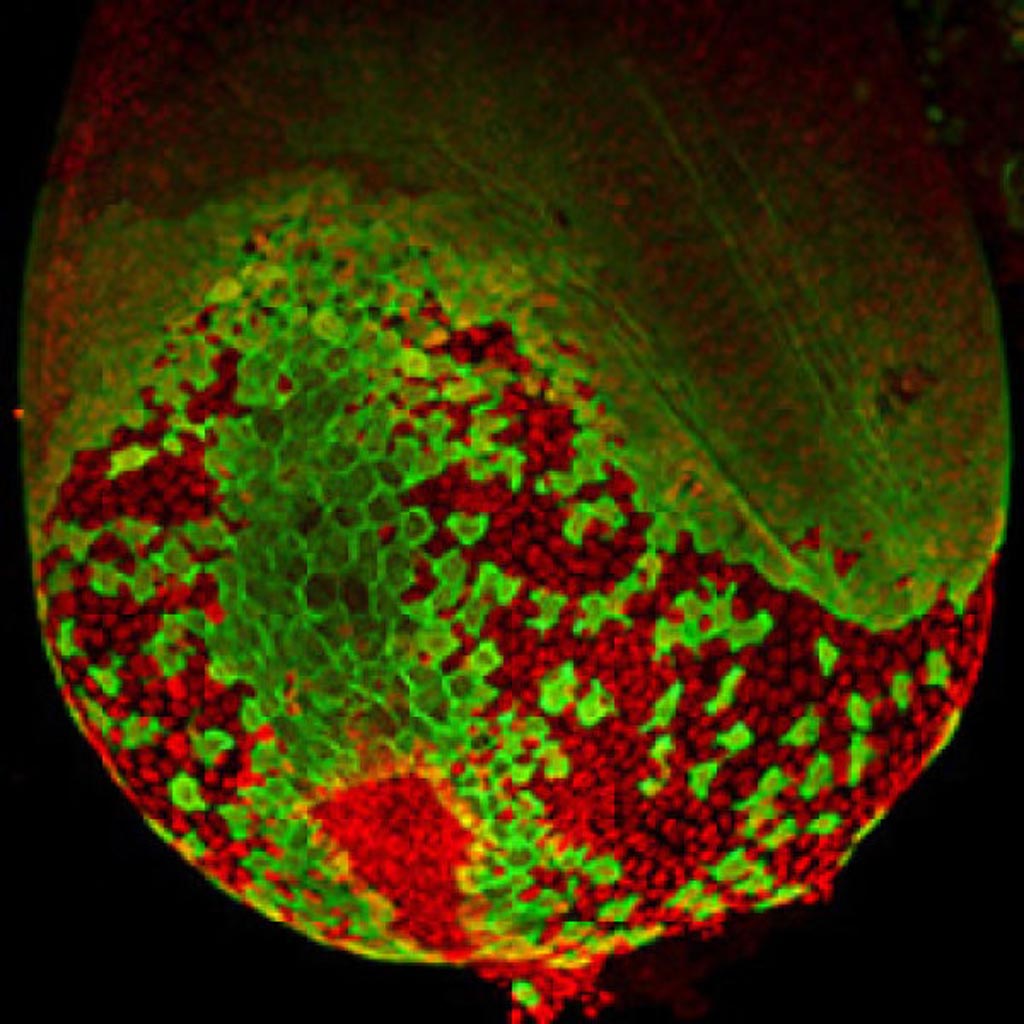Diabetes Researchers Convert Stem Cells into Insulin-Producing Cells
By LabMedica International staff writers
Posted on 11 Dec 2018
A team of stem cell biologists working on the problem of pancreas replacement in patients with type I diabetes identified the extrinsic and intrinsic signaling mechanisms that coordinate the fate-determining transcriptional events underlying the maturation of bipotent pancreatic progenitors and used this information to convert these pancreatic progenitors - derived from human embryonic stem cells - to insulin-producing islet cells.Posted on 11 Dec 2018
The pancreas originates from two epithelial evaginations (meaning to turn an organ or part inside out) of the foregut, which consist of multipotent epithelial progenitor cells that organize into a complex tubular epithelial network. The trunk domain of each epithelial branch consists of bipotent pancreatic progenitors that give rise to both duct and endocrine lineages.

Image: Endodermal cells, they form organs such as lung, liver and pancreas (Photo courtesy of IDR, Helmholtz Zentrum München).
Investigators at Helmholtz Zentrum München (Munich, Germany) reported in the November 28, 2018, online edition of the journal Nature that single-cell analysis of pancreatic bipotent pancreatic progenitors derived from human embryonic stem cells revealed that cell confinement was a prerequisite for endocrine specification, whereas spreading drove the progenitors towards a ductal fate. Mechanistic studies identified the interaction of extracellular matrix (ECM) with integrin alpha5 as the extracellular cue that controlled the fate of bipotent pancreatic progenitors.
While ECM-integrin alpha5 signaling promoted differentiation towards the duct lineage, disruption of this signaling cascade stimulated hormone development. This cascade could be disrupted genetically or with drugs to convert bipotent pancreatic progenitors derived from human embryonic stem cells into hormone-producing islet cells.
"We have now been able to map the signal that determines whether pancreatic progenitor cells will become endocrine, such as insulin-producing beta cells or duct cells", said senior author Dr. Henrik Semb, director of the institute of translational stem cell research at Helmholtz Zentrum München. "The cells are analogous to pinballs, whose ultimate score is based on the sum of pin encounters. They are constantly moving around within the developing pancreas, leading to frequent environmental changes. We show that the exposure to specific extracellular matrix components determines the ultimate destiny of the cells."
"We can now replace significant numbers of empirically derived substances, whose mode of action in current state-of-the-art differentiation protocols is largely unknown, with small molecule inhibitors that target specific components of the newly identified mechano-signaling pathway," said Dr. Semb. "Our discovery breaks new ground because it explains how multipotent progenitor cells mature into different cell types during organ formation. It also gives us the tools to recreate the processes in the laboratory, to more precisely engineer cells that are lost or damaged in severe diseases, such as type I diabetes and neurodegenerative diseases, for future cell replacement therapies."
Related Links:
Helmholtz Zentrum München













